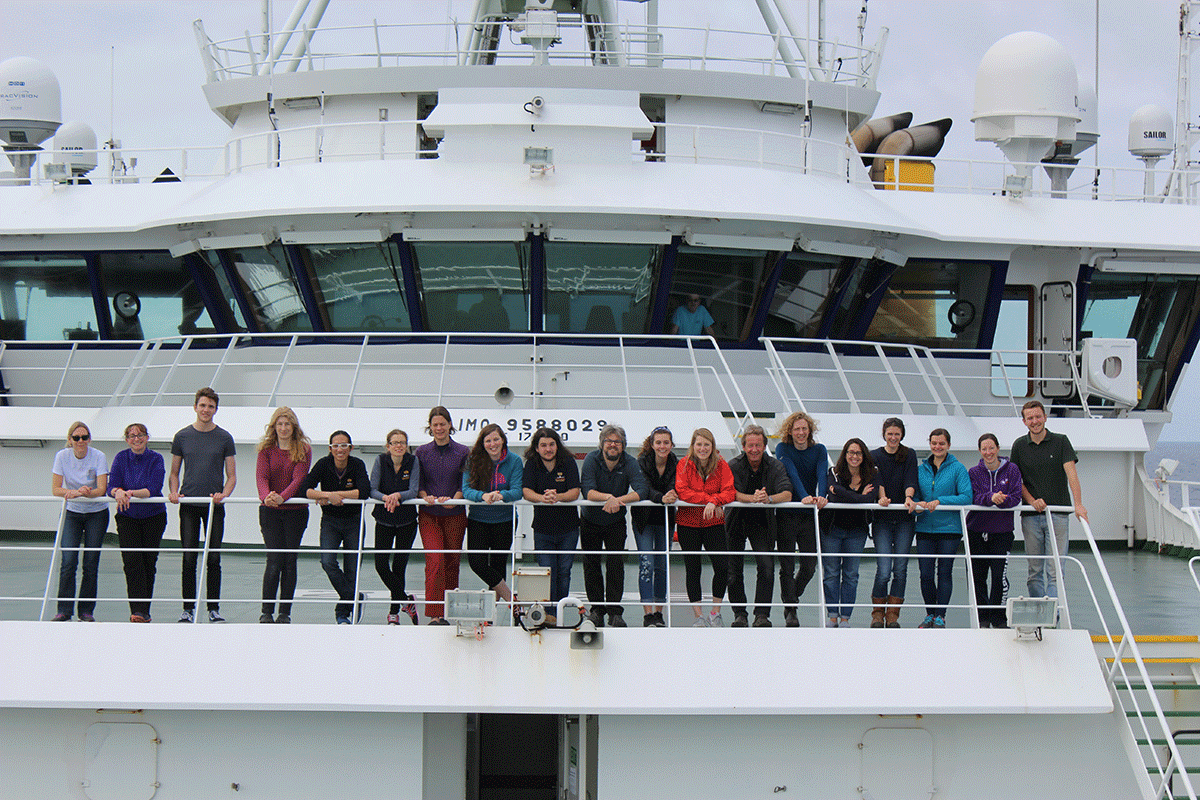
Rebecca Pickering, a third year PhD student in Dr. Jeffrey Krause’s lab, recently returned from a 40-day research expedition aboard the Royal Research Ship Discovery. The team of 18 scientists was led by Dr. Kate Hendry from the University of Bristol, with a goal of creating a cross-disciplinary view of nutrient cycling, biomineralisation, and the taxonomy and biogeography of siliceous organisms in an ecologically important region of the North Atlantic and Labrador Sea.
In total, the ship had 52 members onboard and Pickering was just one of four Americans on the team, with collaborators, technicians, and crew coming from England, Scotland, Wales, and Canada. The ship left port in St John’s, Newfoundland on July 5 and headed to four main sample locations along the southwest coast and southern tip of Greenland. Following the end of scientific sample collection, the ship had a seven-day steam across the Atlantic Ocean, crossing the Mid Atlantic Ridge and returning to its home port of Southampton, United Kingdom.
“This summer was an international immersion. I got to participate in some pretty awesome science and travel to amazing locations, but the professional relationships I built and friendships I formed will last for the rest of my academic/scientific career. I learned a lot about the cultures, food, and languages found in the United Kingdom, but more importantly we discussed some really awesome science. Research crosses international borders and these types of expeditions would not be possible without collaborations from all over the world.”
Much like the Krause lab’s spring intern, William Dobbins, Pickering used the radioisotope 32Si to examine diatom production in coastal surface waters. Dr. Krause’s research focuses on silicon cycling, and his lab's participation in this cruise aimed to investigate whether silicon limitation is reduced or eliminated during the summer in the coastal region affected by glacier meltwater.
Diatoms are the most abundant phytoplankton in high latitudes and polar waters and are foundational to a variety of biological, chemical, and geological processes. Silicon is a critical nutrient for diatoms, as they use it to build their frustule. Knowing the processes that control diatom growth will help predict how diatoms ecological role may change with increased meltwater inputs due to ice sheet and glacier loss in the future.
Pickering’s samples returned with her to the United States and will be processed at the Dauphin Island Sea Lab in the upcoming months.
Funding for Rebecca’s travel to/from the expedition was made possible by the USA Department of Marine Sciences Travel Grant and the Dauphin Island Sea Lab.
University’s and Organizations involved on the expedition:
University of Bristol
Huntsman Marine Science Centre (Canada)
The Open University
Southampton University
British Antarctic Survey
University of New Hampshire’s Center for Coastal and Ocean Mapping
Natural Environment Research Council
National Oceanography Center
Cardiff University
Oxford University
The University of Edinburgh
Imperial College
Lamont-Doherty Earth Observatory of Columbia University
Dauphin Island Sea Lab
University of South Alabama